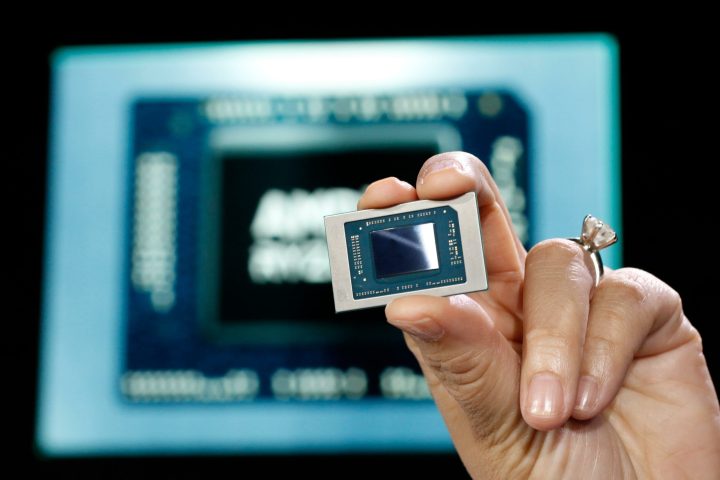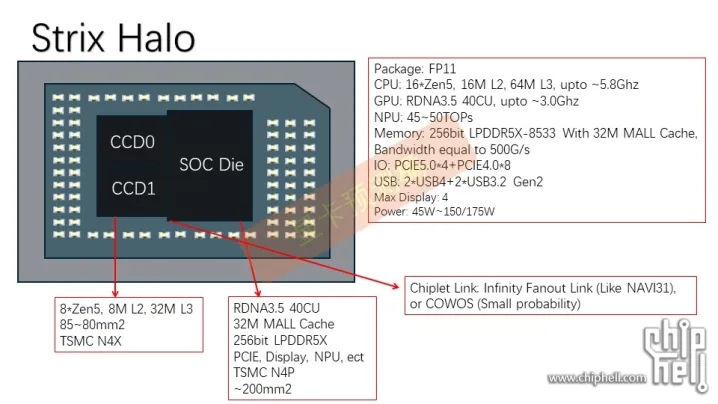
AMD’s rumored Zen 5 laptop chips look very powerful, at least if you believe a recent post on the Chiphell forums (via VideoCardz). The APUs, code-named Strix Halo, are said to come with 40 Compute Units (CUs) of AMD’s RDNA 3.5 graphics architecture, which is more than what you’ll find in the PlayStation 5.
According to the post, AMD is prepping two variants. One is supposedly a 16-core model packing 40 CUs for the GPU, while the other is a 12-core model with 32 CUs. The poster also shared performance estimates for these chips, showing the chip with 40 CUs performing about as well as an RTX 4060 Ti desktop GPU in 3DMark Time Spy.
If that all sounds a little too good to be true, it very well may be. These aren’t leaked specs — this is just a rumor posted on a forum. AMD has inadvertently confirmed the existence of Strix Halo through commitments to its open-source ROCm platform, but as for the specs or performance of these chips, we’re dealing in rumors.

Outside of core counts, the post also claims the GPU will be able to boost up to 3GHz, which is a higher clock speed than the PS5 boasts. There are other factors that influence the performance of the graphics on an APU — shared memory capacity and bandwidth chief among them — but it’s an impressive spec, if true.
An alleged chip layout shared on the Chiphell forums shows that the GPU is more than twice the size of the two dies AMD is using for the CPU. It’s said to measure around 200m2, while the two CPU dies are said to measure around 80mm2 to 85mm2 each. The post also claims the 16-core version will use two CPU dies and sport a maximum clock speed of 5.8GHz.
Given that this is an APU, the memory will be shared across the CPU and GPU, similar to the APUs inside consoles like the PS5 or Xbox Series X. The post claims these chips will sport a 256-bit memory interface utilizing LPDDR5X-8533, which would enable bandwidth of around 500GB per second. That’s an awfully similar configuration to what we find in current-gen consoles.
Rose-tinted specs?

AMD is no stranger to powerful APUs, designing the chips inside not only current-gen consoles, but also handhelds like the Steam Deck and ROG Ally. These devices have different performance targets for different power ranges, but AMD certainly has the capacity to design a high-performance APU with strong integrated graphics.
If the specs hold up, the main issue facing these APUs would be thermals. The PS5 and Xbox Series X have exotic cooling solutions and much more room than a typical laptop. With more limited space, these rumored Strix Halo chips may not be able to reach their full potential in a portable PC. However, they are rumored to target high-end gaming laptops, which are typically larger and feature more aggressive cooling.
It will be a while before we know more about the specs. Rumor has it that AMD will launch Strix Halo in 2025, so there’s still a lot of time before we see how the chips shape up. This roundup of rumors on Chiphell could hold up, as various YouTube and X leakers have suggested, or it could be a bunch of hogwash. We’ll just have to wait and see.




